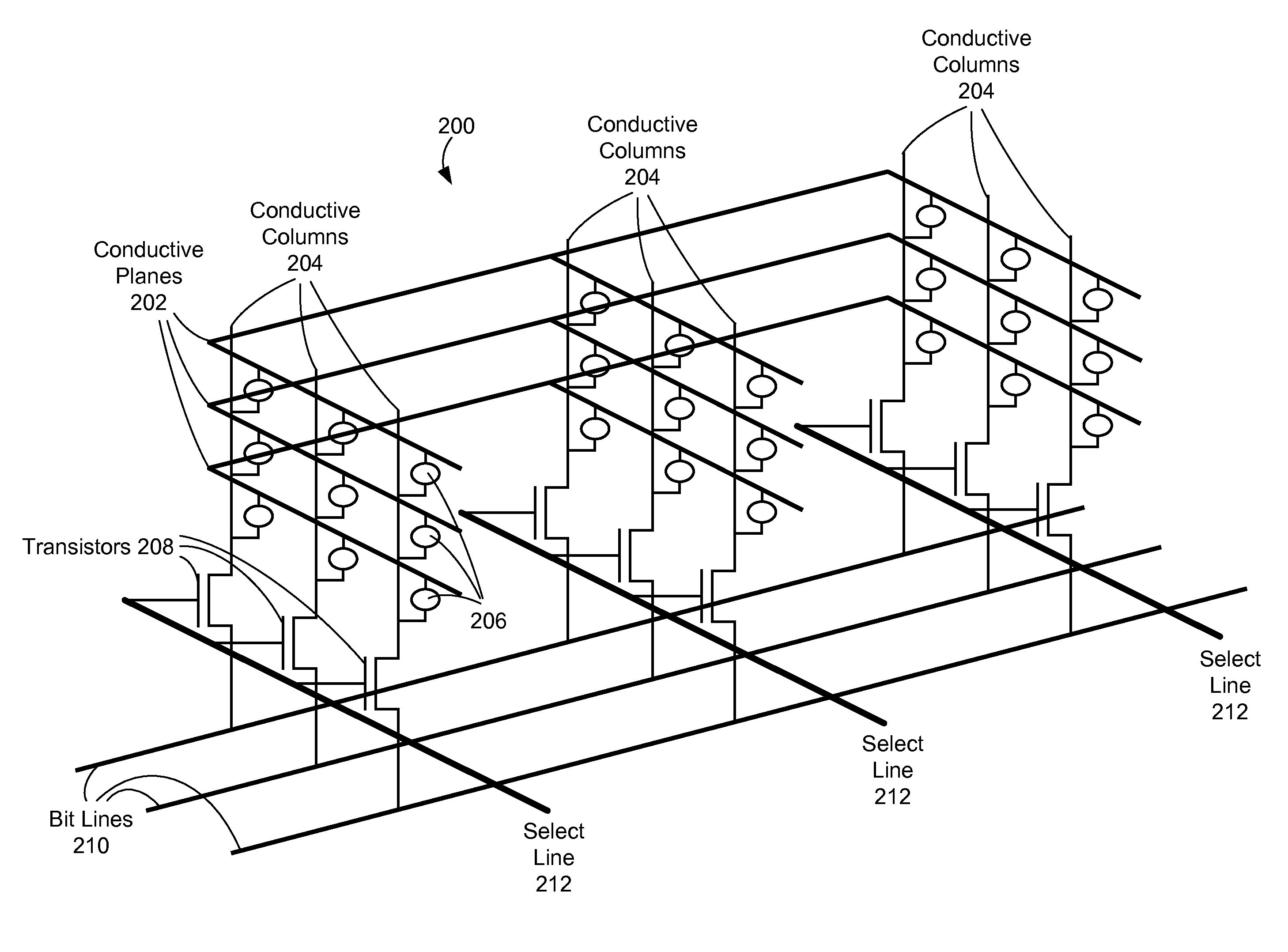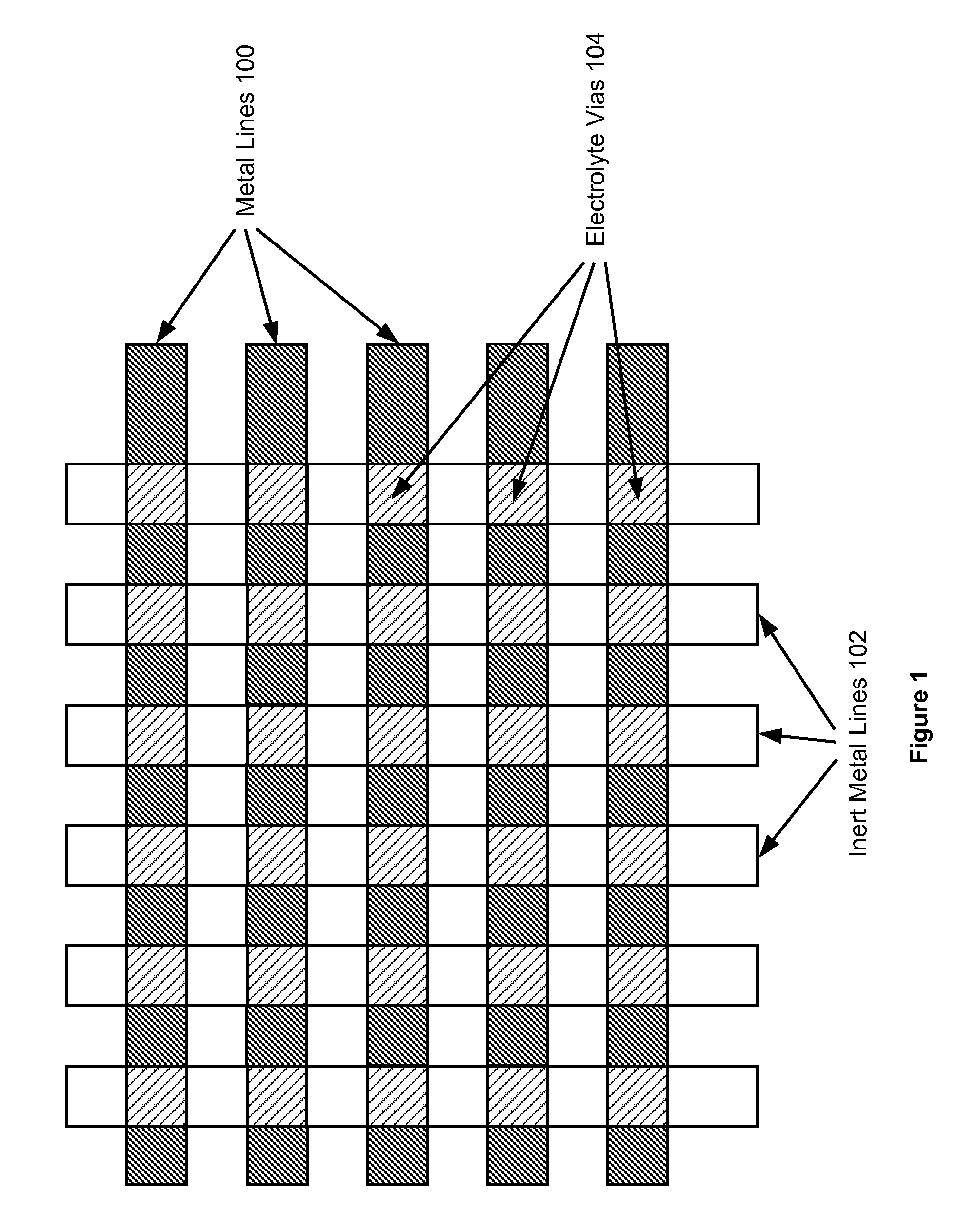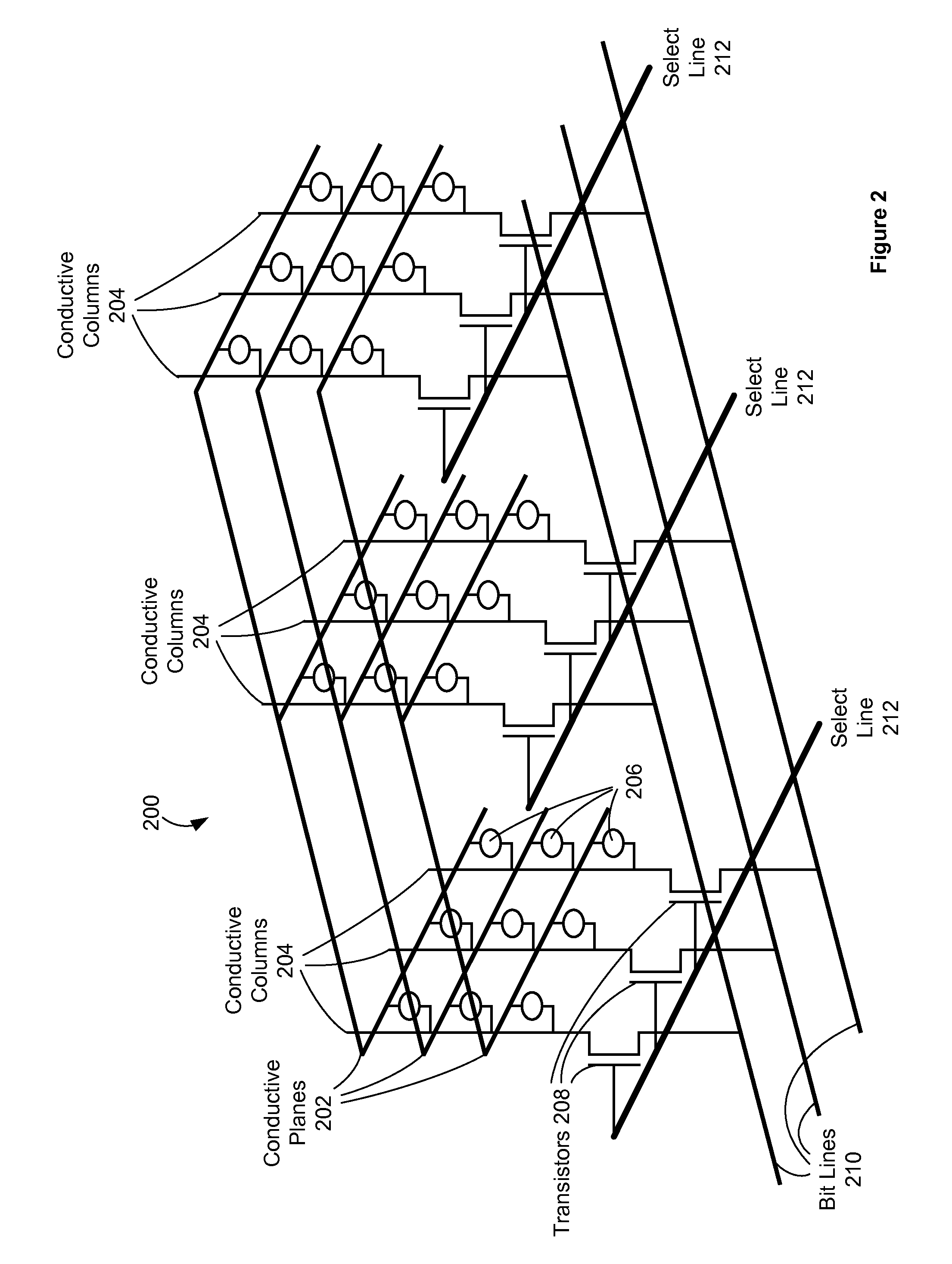Three-dimensional memory array stacking structure
a memory array and stacking technology, applied in the field of memory devices, can solve the problems of complex manufacturing process with a high cost per bit, high parasitic wiring resistance, and significant engineering challenges in the design and fabrication of three-dimensional memory arrays
- Summary
- Abstract
- Description
- Claims
- Application Information
AI Technical Summary
Problems solved by technology
Method used
Image
Examples
Embodiment Construction
[0023]A memory device has a three-dimensional array stacking structure. The structure includes a planar substrate, a plurality of horizontal conductive planes above the planar substrate, and a plurality of horizontal insulating layers interleaved with the plurality of horizontal conductive planes. Vertical conductive columns, perpendicular to the conductive planes and insulating layers, pass through apertures in the conductive planes and insulating layers. Finally, each memory element of the memory device couples one of the horizontal conductive planes to a respective vertical conductive column.
[0024]To program or store information in this memory device, a horizontal conductive plane and a vertical conductive column are selected, and then a voltage is applied between the selected horizontal conductive plane and the selected vertical conductive column to program the programmable memory element that couples the selected horizontal conductive plane to the selected vertical conductive c...
PUM
 Login to View More
Login to View More Abstract
Description
Claims
Application Information
 Login to View More
Login to View More - R&D
- Intellectual Property
- Life Sciences
- Materials
- Tech Scout
- Unparalleled Data Quality
- Higher Quality Content
- 60% Fewer Hallucinations
Browse by: Latest US Patents, China's latest patents, Technical Efficacy Thesaurus, Application Domain, Technology Topic, Popular Technical Reports.
© 2025 PatSnap. All rights reserved.Legal|Privacy policy|Modern Slavery Act Transparency Statement|Sitemap|About US| Contact US: help@patsnap.com



